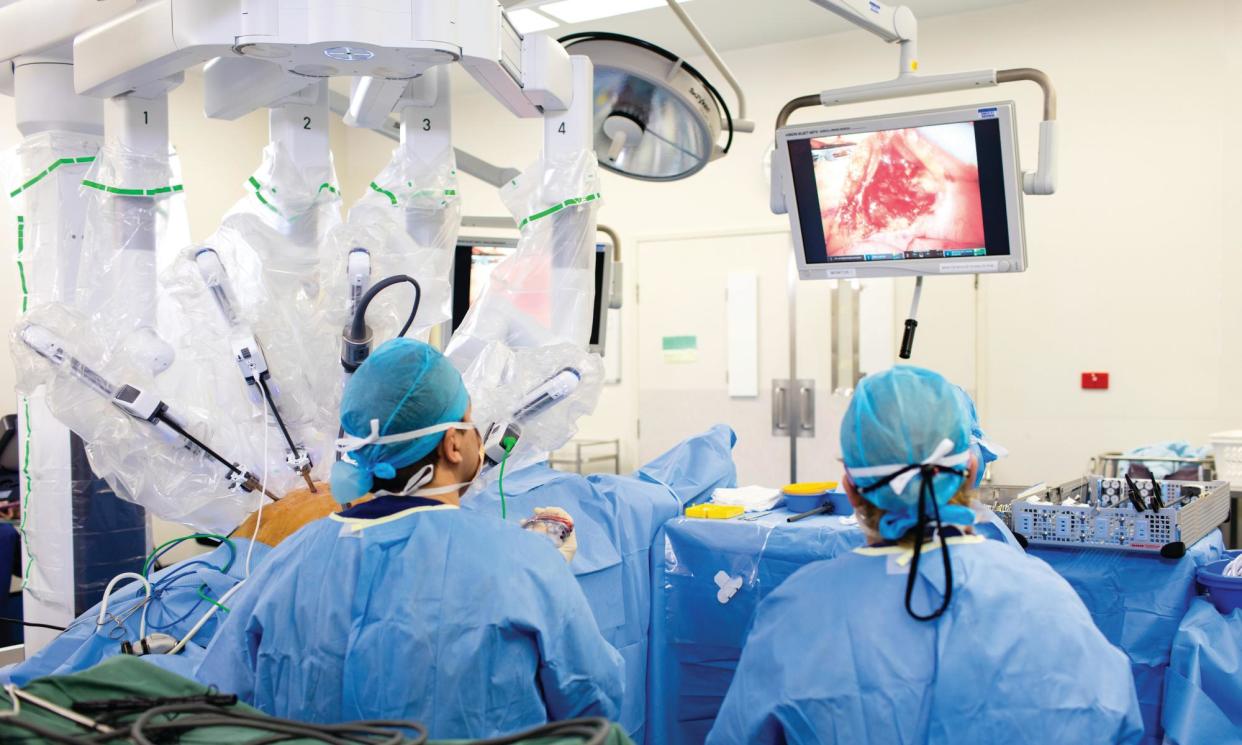Australian health insurers earn $1.3bn more in surplus than two years ago, report shows

Australian private health insurers earned $1.3bn more in surplus from hospital premiums this year compared with two years prior, while returning less money to customers, a new report suggests.
The Australian Medical Association on Friday released its 2023 private health insurance report card, which also showed differences between insurers of more than $500 in benefits paid for identical procedures.
The president of the AMA, Prof Steve Robson said: “The value many consumers receive from their private health insurance is declining, relative to the big profits insurers are making.”
The report found that private health insurer profits have increased over the last year, as elective surgeries in private hospitals resume following the disruptions caused by the pandemic.
According to the AMA, in the most recent financial year 2022–23, gross surplus for hospital insurance – hospital premiums paid in less hospital benefits paid out – represented about 18% of hospital premiums paid.
Related: Single parents face higher health insurance premium increases than other families, analysis shows
It represents a difference in gross surplus from two years earlier in 2020-21 in the order of $1.36bn, according to the report.
The ACCC consumer watchdog’s report on private health insurance released earlier this month suggested the industry’s net profit after tax increased by 110% during the same period – with $2.19bn net profit in 2022-23 up from $1.04bn in 2021–22.
However, while profits were increasing, the report found the proportion of hospital insurance policy premiums returned to patients through rebates or other benefits is decreasing.
While insurers returned more than 88% of hospital insurance policy premiums to patients in 2018-19, that number has fallen to 81.6% in the most recent financial year, the report said drawing on data from the banking regulator APRA.
Robson said the expenditure of many insurers on management expenses has continued to increase over the past year, and the profits made by the largest for-profit insurers continue to be “concerningly high.”
Rachel David, the CEO of Private Healthcare Australia, rejected claims of declining value and said health funds paid 5% more on average for hospital treatment per policyholder in 2022–23 compared to the previous year.
The average amount paid by insurers for extras – such as dental, physiotherapy and optical treatments – increased by 8.4% per policyholder in 2022-23, David said.
The report from the peak medical body comes as health insurers are enjoying a profitable period, led by the two biggest operators in Australia, Bupa and Medibank.
Net profit at Medibank jumped almost 30% in 2022-23 to $511m, backed by a 9.8% increase in profits derived from its health insurance business, which includes hospital cover. Operating margins also increased.
After the results were published in August, chief executive David Koczkar said “while consumers are paring back their spending in many areas, health is not one. People are still opting for private health insurance in record numbers.”
Medibank has been increasing its profit margins derived from health insurance throughout the pandemic, rising from 7.2% in 2019-20 to 9.1% last financial year. It has attributed the strong financial performance of the division to an increase in policyholder numbers and customer focus.
Profits at the London-headquartered Bupa increased 43% to £575m in 2022, its last published annual results. Australia and the wider Asia Pacific region generate about 40% of revenues for the company.
The AMA report also found there remains large differences in the amount an insurer will pay towards a medical service, and it varies from fund to fund and procedure to procedure.
For the uncomplicated delivery of a baby, the benefits vary as much as 30%, with HBF in WA can offer the customer $520.35 more in benefits than NIB.
The report also found a 40% variation between insurers in benefits for hernias.
The AMA has called for a federal government mandate to be introduced that would require every insurer to return a minimum amount to patient care each year.
Ian McAuley, a research fellow at the Centre for Policy Development who has undertaken extensive research into the private health insurance industry, said he believes “rather than making private health insurance work through subsidies and incentives, we should make Medicare work and give up private health insurance.”
“Its admin costs are much lower, and being taxpayer funded it’s a much fairer system. Some say that that would be the end of private hospitals, but they can contract to state governments just as public hospitals do,” McAuley said.
• This article was amended on 15 December 2023 to change references from profit to surplus – which is premiums paid in less benefits paid out.


